Metal 3D Printing Overview
Metal 3D printing is a 3D printing technology that uses metal powder to directly print metal parts, also known as metal powder sintering (SLM). In addition to good plasticity, 3D printing metal powder must also meet the requirements of fine powder particle size and high particle size distribution. Narrow, high sphericity, good fluidity and high bulk density requirements.
Characteristic of Metal 3D Printing
High precision and complexity: Metal 3D printing technology can manufacture parts and structures with highly complex geometric shapes, with precision reaching the micrometer level. This enables designers and engineers to create complex designs that are difficult to achieve using traditional methods.
Material diversity: Metal 3D printing uses a variety of metal materials, including stainless steel, aluminum alloy, titanium alloy, nickel based alloy, etc. These materials provide a wide range of mechanical properties and applications, suitable for various application scenarios.
Customized production: Metal 3D printing allows for small batch or single piece customization production, which is very suitable for the production of personalized products or customized parts. It reduces the demand for molds and tools and shortens the product development cycle.
High material utilization: Metal 3D printing constructs parts by stacking materials layer by layer, avoiding material waste in traditional processing methods. Only the required materials are used, improving material utilization efficiency.
Design Freedom: Metal 3D printing is not limited by traditional manufacturing methods, allowing designers to freely unleash their creativity and create parts with unique structures and functions.
Reduce production steps: Traditional metal processing usually requires multiple processes, including cutting, drilling, grinding, etc. Metal 3D printing can print multiple parts or components at once, reducing production steps and assembly time.
Lightweight and functional integration: Metal 3D printing can manufacture parts with complex internal structures and lightweight designs, while also integrating functions such as cooling channels, sensors, etc. inside the parts.
Sustainable development potential: Metal 3D printing can reduce material waste and energy consumption in the production process, which is beneficial for sustainable development. At the same time, it also promotes the reuse and recycling of resources.
Metal 3D Printing Application
Customized parts manufacturing: Customized metal parts can be quickly manufactured to meet the needs of different customers. This technology suits small-batch, high-precision, and complex structure parts manufacturing.
Prototyping: Designers and engineers can use 3D metal printing technology to quickly manufacture prototypes for testing and verification. This technology can significantly shorten the product development cycle and reduce development costs.
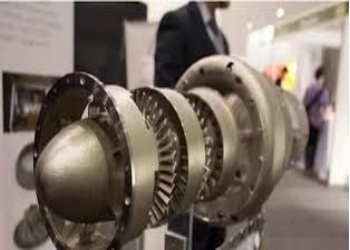
Metal 3D Printing in prototyping
Manufacturing complex structural parts: Conventional machining methods make producing metal parts with complex structures challenging, while 3D metal printing technology can be easily achieved. This technology can manufacture parts with complex internal structures and high precision requirements.
Personalized jewelry production: Through 3D metal printing technology, customized jewelry, such as rings, pendants, etc., can be created. This technology can meet the needs of consumers for personalization and customization.
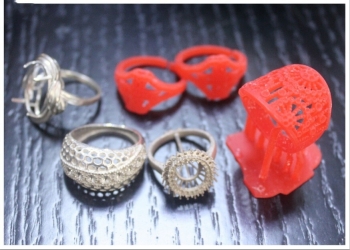
Metal 3D Printing in personalized jewelry
Medical field: 3D metal printing technology can create implants that perfectly match human bones and tissues, improving patients' medical outcomes and quality of life.
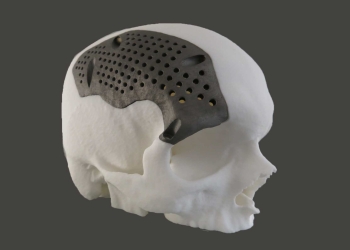
Metal 3D Printing in medical field
Aerospace field: In the aerospace field, 3D metal printing technology can manufacture engine components, aircraft components, etc.
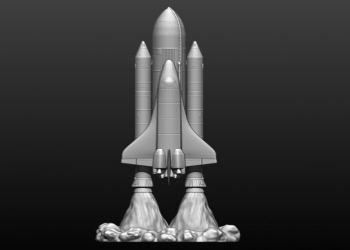
Metal 3D Printing in aerospace field
In the automotive field: 3D metal printing technology can manufacture engine parts, transmission gears, etc. This technology can improve cars' performance and fuel efficiency while reducing manufacturing costs.
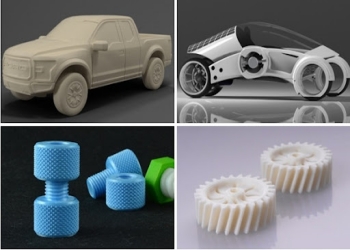
Metal 3D Printing in automotive field
Energy sector: In the energy sector, 3D metal printing technology can manufacture metal components for equipment such as solar panels and wind turbines. This technology can improve the performance and stability of equipment and reduce manufacturing costs.
In education: 3D metal printing technology can be used for teaching and experimentation. Allowing students to design and manufacture metal parts themselves can improve their practical abilities and innovative thinking.
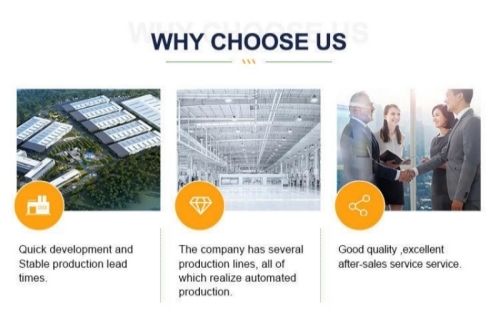
Company Profile
NANOTRUN(www.rboschco.com) is a trusted global chemical material supplier & manufacturer with over 12-year-experience in providing super high-quality chemicals and nanomaterials, including boride powder, nitride powder, graphite powder, sulfide powder, 3D printing powder, etc.
The company has a professional technical department and Quality Supervision Department, a well-equipped laboratory, and equipped with advanced testing equipment and after-sales customer service center.
If you are looking for high-quality metal 3D printing, please feel free to contact us or click on the needed products to send an inquiry.
Payment Term
L/C, T/T, Western Union, Paypal, Credit Card etc.

Shipment Term
By sea, by air, by express, as customers request.
FAQ
Q1:
What are the main advantages of metal 3D printing?
Re: The main advantages of metal 3D printing include the ability to manufacture complex structures, material strength, accuracy, and customization. It allows for the creation of complex geometric shapes that are difficult or impossible to achieve using traditional manufacturing methods.
Q2:
What materials are commonly used in metal 3D printing?
Re: The commonly used materials for metal 3D printing include stainless steel, titanium alloy, aluminum alloy, nickel based alloy, etc. These materials provide a variety of properties ranging from high strength to high temperature resistance.
Q3:
What is the speed of metal 3D printing?
Re: The speed of metal 3D printing depends on multiple factors, including printer model, material type, print size, and complexity. Although metal 3D printing is usually slower compared to plastic 3D printing, with the advancement of technology, the printing speed is constantly improving.
Q4:
How environmentally friendly is metal 3D printing?
Re: Compared to traditional manufacturing methods, metal 3D printing can reduce material waste and energy consumption. However, the production and processing of metal powders may generate some environmental issues, so environmental friendliness depends on the management and sustainability of the entire production chain.
Q5:
What are the differences between metal 3D printing and traditional metal processing?
Re: The biggest difference between metal 3D printing and traditional metal processing lies in the essence of the manufacturing process. Traditional metal processing typically starts with a larger piece of raw material and involves operations such as cutting, grinding, and drilling to manufacture parts. Metal 3D printing, on the other hand, directly constructs parts by stacking materials layer by layer without the need for raw materials. This manufacturing method can greatly shorten the product development cycle, reduce material waste, and improve manufacturing flexibility.
-
Item No.: Tr-nitinol Nitinol Titanium powder is a shape memory alloy, which is a special alloy that can automatically restore its plastic deformation to its original shape at a certain temperature and has good plasticity.Purity:99.9%Particle size: 15- 53 micron
-
We use the nickel-based metal powder in industrial and aviation steam turbines, petrochemicals, nuclear reactors, laser cladding, and other fields. Particle size: 0-45 μm, 0-53 μm, 15-45 μm, 15-53 μm, 45-105 μm.Color: Gray black. Use: 3D printing.
-
Mold steel powder is used to make molds such as cold die, hot forging die, die casting die, etc.Particle size: 0-45 μm, 0-53 μm, 15-45 μm, 15-53 μm, 45-105 μm. Use: 3D printing
-
Nickel-based metal powder 3D metal powder price in industrial and aviation steam turbines, petrochemicals, nuclear reactors, laser cladding, and other fields.Particle size: 0-45 μm, 0-53 μm, 15-45 μm, 15-53 μm, 45-105 μm. Use: 3D printing.
-
M2 mold steel powder is molybdenum high speed steel, which has the advantages of small carbide unevenness and high toughnessParticle size: 0-45 μm, 0-53 μm, 15-45 μm, 15-53 μm, 45-105 μm. Use: 3D printing
-
17-4PH stainless steel powder is a martensitic precipitation hardening stainless steel used to manufacture shafts and steam turbine parts.Particle size: 0-45 μm, 0-53 μm, 15-45 μm, 15-53 μm, 45-105 μm. Use: 3D Printing.
-
Iron-based metal powders are used in 3D printed thin-walled devices and complex parts, thermal spray, laser cladding, and biomedical applications.Particle size: 0-45 μm, 0-53 μm, 15-45 μm, 15-53 μm, 45-105 μm. Use: 3D printing
-
Stainless Steel 440C Powder can be used in laser/electron beam additive manufacturing (SLM/EBM), laser direct deposition (DLD), powder hot isostatic pressing (HIP), etc.Particle size: 0-45 μm, 0-53 μm, 15-45 μm, 15-53 μm, 45-105 μm. Use: 3D printing.
-
Spherical Nickel is powder, chemical formula Ni, submicron and nanopowder forms may be considered for industrial and application purpose. The appearance of Spherical Nickel Powder is gray black. It is mainly applied in the 3D printing.
-
Titanium Powder is used in cermets, high temperature oxidation resistant coatings, etc. Particle size: 5-10μmColor: Gray blackApplication: 3D printing
-
Chromium powder is Spherical, chemical formula Cr, submicron and nanopowder forms may be considered for industrial and application purpose. The appearance of Chromium powder is gray black powder. It is mainly applied in the 3D Printing.
-
Mainly used in aerospace connectors, automobile manufacturing, engineering components and construction.Particle size: 0-45 μm, 0-53 μm, 15-45 μm, 15-53 μm, 45-105 μm. Application: 3D printing.











